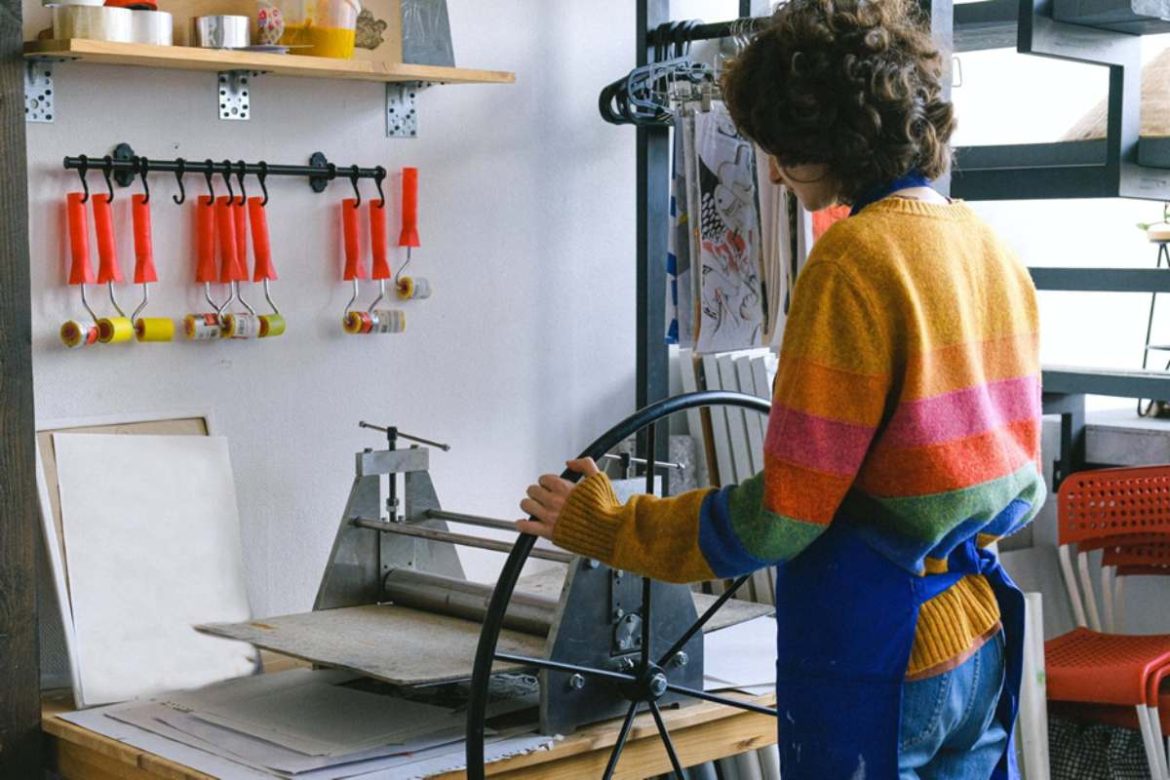Today, the printing industry has evolved, but it is still highly relevant even in the digital era. The integration of technology into the world of printing has added incredible value to the industry and opened the doors for new opportunities. But with so many options available in the market, it could be challenging to navigate through the different tech items you need. This blog post will explore some of the critical tech items you require to run a modern printing press.
Despite the digital revolution, printed materials continue to hold a unique appeal. The tactile experience of holding a printed item, be it a book, a brochure, or a magazine, is unmatched. Print provides a sense of permanence and legitimacy that digital mediums often struggle to convey. Additionally, physical materials can often be easier on the eyes compared to screen-based reading. This is particularly important in an era where we are constantly bombarded with digital content, leading to digital fatigue. Furthermore, studies have shown that printed materials can enhance retention and comprehension, making them a popular choice in educational contexts. Therefore, the demand for printed materials in our modern world remains strong, reinforcing the importance and relevance of a well-equipped, modern printing press. So what technology do you need to run a successful printing press?
Table of Contents
A Quality Computer
A quality computer preferably Mac or Windows is an essential piece of technology to have when running a printing press. A reliable computer is essential when it comes to designing print projects and preparing files for print. Investing in a high-end computer with impressive RAM, graphics, and processor is an excellent decision for your printing press. You also want to keep up to date with any software updates that best perform with your printer. Adobe Creative Suite is an excellent example of the software you need for designing graphics. Investing in a quality computer is not something to overlook, and it should be a vital need in your printing press.
Top-Notch Printing System
You can’t run a printing press without a top-notch printing system. With the world of printing evolving, inkjet printers have become the go-to printing system as they are quicker, cost-effective, and produce remarkable results. Investing in a printing system that utilizes the latest print head technology ensures speedy and superior quality prints. One such example is the Epson SureColor P1000. The printing industry continues to evolve, and it will help to keep research to stay informed about new trending printing systems in the market.
MHD Servo Motors
A crucial component in the modern printing press is the MHD Servo Motor. These high-performance motors are known for their operational efficiency, precision, and durability. MHD Servo Motors, specifically Rexroth Indramat MHD Servo Motors, are widely used in printing presses due to their excellent dynamic response. They facilitate rapid acceleration and deceleration of the printing press, increasing overall productivity. Furthermore, their high torque density ensures precise control over the press’s operations, which is instrumental in achieving top-quality prints. More importantly, MHD Servo Motors are incredibly energy-efficient, reducing operational costs in the long run. Therefore, incorporating them into your printing press setup can significantly enhance both the quality and efficiency of your printing operations.
Color Management System
Printing quality color is essential when running a printing press. To ensure consistent reproduction of color and print quality, investing in a color management system is necessary. A color management system accurately reproduces color by mimicking the colors of a printed sheet on an electronic display. With a color management system, you can print colors that match designs accurately. One such example of a color management system is the X-rite i1 Studio, which measures and calibrates your printer, monitor, and scanner to ensure color accuracy on every print.
Web-to-Print Platform
If you run a printing press and don’t have a web-to-print platform, you’re missing out on significant potential revenue. A web-to-print platform positions your business to take advantage of online marketing and ecommerce. A web-to-print platform allows your customers to order printed items online, such as business cards, banners, and brochures. They can select pre-designed templates, modify their own designs, and submit their print files. A web-to-print platform streamlines the order process, keeping your customers and business organized. Some examples of web-to-print platforms include RedTie, Prindoz, and iWay.
An Efficient Workflow Management System
An efficient workflow management system is a must in running a printing press. A workflow management system enables you to optimize, track, and manage your printing process from order intake to shipping. From tracking, scheduling, assigning work, and monitoring delivery, a workflow management system gives you control over your printing processes. A workflow management system ensures that customers’ orders are processed quicker, reducing costs and improving overall productivity and customer satisfaction. Some examples of workflow management systems include Print MIS, EFI PrintSmith and operational software such as TitaniumZ or PrintLogic.
Analog Presses and Manual Typesetting
While the advent of modern technology has revolutionized the printing industry, there has been a surprising resurgence of interest in analog presses and manual typesetting. Some customers are demonstrating a preference for older technologies to achieve a unique, handmade, vintage feel for special print runs. These traditional printing methods, such as letterpress or offset printing, offer a distinctive aesthetic and tactile experience that modern machinery often fails to replicate. The textures of the imprint, the variance in ink distribution, and the hands-on craft of typesetting all contribute to the vintage charm that customers seek. It’s a reminder that as much as we celebrate technological progress, there still remains an enduring appreciation for the artistry and craftsmanship of the past.
Running a printing press in the modern age necessitates keeping up with technological advancement. Integrating technology helps to streamline your printing business processes, ultimately increasing both efficiency and profitability. From a quality computer to workflow system management and web-to-print platforms, the right technological investment will ultimately pay dividends in your printing operations and overall business growth.


